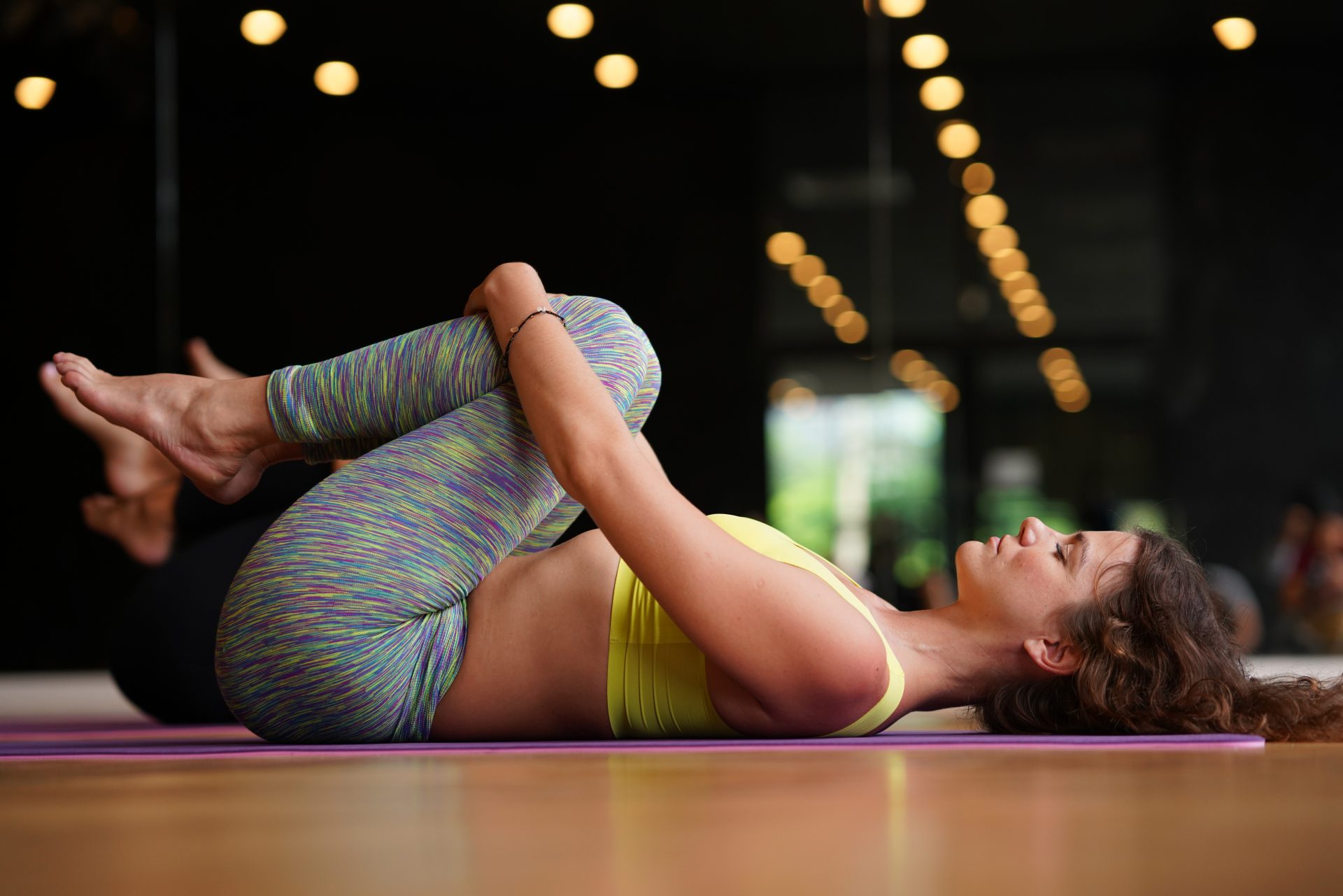January Kickstarter: what does it really mean to ‘engage your core’?

This January, we’re on the search for quick, accessible hacks to kickstart 2023 in the strongest way possible. Today’s strength kickstarter: how to engage your core muscles.
Head to any pilates or strength class and, at some point, you’ll be told to ‘engage your core’. It’s a common instruction, but how many of us actually know what it means? The fitness industry is full of confusing jargon – most of which you can afford to ignore. But some phrases are really important for protecting against injury, getting the most from your workout and switching up your training.
When it comes to core engagement, you’ll hear the instruction whether you’re in a strength class, a pilates session, a yoga flow or doing a technical run. And that’s because our core – the corset of muscles that embraces our middle body – is responsible for how we move and perform. Neglect that section and you’ll quickly find yourself weighed down with back problems, hip pain and more.
You may also like
Core workout for back pain: 5 ab and hip strengthening moves to ease backache
So, what does it mean to engage the core, and why is it such a common instruction?
First off, a recap on what your core is.
It’s made up of a bunch of muscles that run from your front (where a six-pack might be) to your spine.
The core includes:
- Rectus abdominals (the ‘abs’ that you might see or feel)
- Transverse abdominals (which sit beneath the transverse abs, stretching from ribs to pelvis and acting as a sort of back support belt)
- Multifidus (deep back muscles that run along the spine)
- Internal and external obliques (side muscles)
- Erector spinae (situated on either side of the vertebral column, extending from head to pelvis)
- Diaphragm (located below the lungs)
- Pelvic floor muscles (a hammock of muscles that support the bladder, bowel, vagina, etc)
You could also argue that your lats (the muscle that runs from your armpit to mid-back), traps (upper-back and neck) and glutes (butt) are also core muscles.
What does ‘engaging the core’ mean?
“It’s an instruction to brace your mid-section/core muscles to help support the spine, lower back and pelvis in a static position while performing exercises,” explains Ellie Crawley, strength coach and founder of MyFeelFit. The purpose, as we’ve outlined, is “to prevent injury, make you stronger and feel more stable in those movements”.
Why is engaging the core so important?
From pilates to running and squatting, it’s a common teaching point. That’s because it’s fundamental, Crawley explains, in “helping with posture, balance, stability and preventing lower back injuries”.
“Most people find it difficult to engage their core without the right teaching points for them, and as a coach, I will adapt my coaching points if people don’t understand or can’t relate to what I am saying,” she says.
“If you don’t engage your core for heavy lifting, you will most likely experience back pain, other injuries or you simply won’t be able to lift as heavy as you might otherwise have been able to. Think of the core as your shield during lifting. Brace it before you start the lift and exhale as you come out of the lift.”
Think about a squat. You want to breathe in and brace as you squat down and then exhale to have the power to lift back out of it. “Bracing or engaging core is a protection – if you’re all floppy and not under tension, you won’t be able to lift,” Crawley explains.
How to engage your core
This is all about bracing those muscles. Imagine for a second that someone’s about to punch you in the stomach. You wouldn’t just stand there feeling flaccid – you’d brace yourself for the hit. That’s the action we’re looking for here. You’re not sucking your stomach in, but thinking about tightening the middle section to avoid being knocked off balance – bringing those core muscles closer together.
Struggling to think what an engaged core might feel like? Crawley recommends the following activation (which often forms part of a pilates workout).
- Lie flat on your back, feet on the floor with knees bent
- Now tilt your tailbone up so that your lower back is pressed into the floor
- Breathe in and as you exhale, think about pushing your ribs down towards the hips and core muscles into the floor
- If you want more feedback, try tying a belt or resistance band around your core as you do this. Think about breathing into the band rather than trying to suck it in.

You can have great core strength at any size
It’s worth saying that quite often, core workouts have traditionally been associated with six-packs and diet culture, but building a strong core is absolutely fundamental to fitness. Being able to contract those muscles is a necessary skill that has nothing to do with visible abs.
As Crawley puts it: “Core strength has nothing to do with a six-pack.” In fact, she says that if you’re performing exercises properly during most workouts, you’ll be training your core without even realising it.
“I’ve always said when weight lifting that if you don’t feel your core after a heavy squat or deadlift session, you haven’t performed it right. I’m sure that there are a lot of us out there without a six-pack who have some of the strongest core strength!”
Images: Getty
Source: Read Full Article